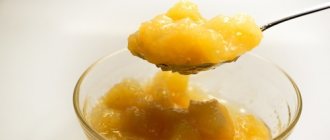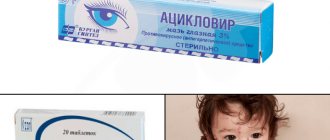Doctors prescribe glucose for newborns for many reasons. It is a valuable source of nutrition that is easily absorbed by the baby's body. It is used if the baby was born premature or the mother has problems with breastfeeding. In addition, glucose is useful for various childhood diseases.
Medical indications for use will help you figure out whether the baby needs it. In any case, you should only give your child this medicine with the permission of a doctor.
Indications for the use of glucose for newborns
According to pediatricians, a baby's blood sugar level drops sharply in the first minutes of life after birth. This is considered normal if after an hour and a half the indicator of its content in the blood reaches the desired level. If glucose levels do not increase, doctors may suspect that the child is developing hypoglycemia. This is a serious condition that requires urgent treatment.
Glucose for newborns is available in an isotonic solution of 5%. In addition to the already mentioned hypoglycemia, this drug is prescribed in the following cases:
- if the mother has little or no breast milk (glucose can replace the baby’s nutrition);
- for asphyxia (used as food during resuscitation);
- if the child has had birth injuries to the head and back (they affect the cardiovascular and respiratory systems, which can be helped by a glucose solution).
Blood sugar
Glucose solution is prescribed to children, as well as to adults, only after a blood test. In this section of the article we will talk about normal blood sugar levels in adults and children.
Surely everyone has heard that you need to regularly test your blood for sugar. Although this is a generally accepted name, it is not entirely correct.
The fact is that in the Middle Ages, doctors believed that increased thirst, frequent urination, purulent infections were all the result of excess sugar in a person’s blood. But nowadays doctors are sure that it is completely absent there, since all simple sugars are converted into glucose.
Thus, when they talk about blood sugar, they mean the concentration of glucose, which plays a big role in metabolism and supplies energy to all tissues and organs. In the table below you will see the normal blood sugar level for an adult.
| Index | Normal for a person with diabetes | Normal for a healthy person |
| Fasting (mmol/l) | From 5 to 7.2 | From 3.9 to 5 |
| One hour after eating (mmol/l) | To 10 | Up to 5.5 |
| Glycated hemoglobin (%) | No more than 7 | From 4.6 to 5.4 |
In the following table you can see the normal glucose concentration in a child from the first days of life to eleven years.
| Age | Norm (mmol/l) |
| Up to a year | 2,8-4,4 |
| 1-5 | 3,3-5 |
| 6 and older | 3,3-5,5 |
What determines the level of glucose concentration in a child’s blood? The most obvious factors:
- nutrition;
- work of the digestive tract;
- influence of hormones and so on.
The fact that this indicator may fall below normal is influenced by the following reasons:
- starvation;
- the child drinks little water;
- chronic illness;
- pathologies of the digestive tract;
- nervous system;
- arsenic poisoning.
And indicators above the norm are provoked by:
- diabetes mellitus;
- incorrect performance of the analysis (eating before blood sampling, overexertion, both physical and nervous, etc.);
- thyroid disease;
- pancreatic tumor;
- obesity;
- long-term use of anti-inflammatory drugs.
How to give correctly?
Doctors say that glucose in its pure form cannot harm the baby’s health. However, many mothers note that it is quite difficult to give it to their child because of its very sweet taste.
In medical institutions, glucose solution is administered to infants intravenously, through a tube, or given in a bottle of milk.
If the medication is taken at home as prescribed by the pediatrician, then many mothers have a question: is it worth giving the concentrated solution to the baby?
We recommend reading: Galstena for jaundice in newborns
To make taking it easy, use the following tips:
- Don’t be afraid to dilute it, even if your doctor has prescribed a certain concentration. The baby will really like this water with a pleasant sweet taste.
- Dilute glucose with water in a 1:1 ratio.
- Give it to your baby between feedings. If you give sweet water before milk, then there is a high probability that the baby will refuse the breast.
- You should divide your intake into small portions. This is due to the fact that there is very little space in the baby’s ventricle.
- Sometimes newborns suck the solution with great appetite, but then regurgitate it. If you hold the child in an upright position, this will not happen.
Please note that only your pediatrician can prescribe the dose for your baby. Self-medication can cause severe diathesis in the baby.
Glucose
Let's start with an introduction to glucose. What is it? This compound is also called grape sugar, and it is considered the most abundant source of energy in all living organisms on our planet. Where did this name come from? The thing is that glucose can be found in the juice of many berries and fruits, including grapes.
Anyone who loved chemistry and biology must know that our body is capable of breaking down some compounds into glucose and fructose. This list includes:
- cellulose;
- starch;
- glycogen;
- maltose;
- lactose;
- sucrose.
To what has been said, we can also add that the substance described is the main product of photosynthesis. Energy is necessary for the implementation of metabolic processes, and glucose is its universal source.
In animals this compound is found as glycogen, and in plants it is found as starch. Cellulose is a polymer of glucose and forms the basis of the cell wall of plants. Glucose helps animals survive the winter. As an example, consider the wintering of frogs. During cold weather, the level of grape sugar in their blood increases, and due to this, the frog can easily survive being frozen in ice.
In our pharmacies you can find both a liquid solution and tablets with this compound. Note that children are given glucose in ampoules much more often than in tablet form.
Now we propose to move on to the issue of indications and contraindications for taking these drugs.
Does it help newborns with jaundice?
The occurrence of physiological jaundice in children is caused by a sharp increase in the bilirubin pigment. This condition occurs in approximately 70% of all newborns on the second or third day of life and lasts no more than 10 days.
Today, the question of whether glucose can be used to treat jaundice in newborns does not receive a clear answer from doctors.
The results of a study by scientists from the American Academy of Pediatrics indicate that its use for jaundice does not reduce bilirubin levels. According to Russian experts, the prescription of a glucose solution for jaundice is required only if signs of intoxication occur.
To prevent this disease, doctors advise putting the newborn to the breast more often. Breast milk has a beneficial effect on the baby’s health better than any other means.
However, you can only get a comprehensive answer to the question of why newborns need glucose and whether your baby needs it from your pediatrician.
Glucose solution 5 percent for newborns
After birth, children are often diagnosed with jaundice, which occurs due to the accumulation of bilirubin in the bloodstream and tissues.
Most often this is a physiological condition that disappears on its own. But sometimes doctors recommend supporting the baby’s condition when the skin turns yellow. Then doctors prescribe glucose to infants for jaundice.
With the help of the drug, the energy supply in the body increases and the functioning of all vital organs improves.
New mothers are wondering whether glucose is needed for jaundice in newborns. Only a pediatrician can answer this question after examining the child. If there is a need to take the drug, then parents must follow the doctor’s instructions regarding the use of the solution.
Glucose: basic information
Glucose appears as transparent crystals or an aromaless powder with a sweet taste that dissolves in water. The substance can be found in berries, fruits, grapes, starch, sucrose; other food products do not contain it.
The medication is available in the form of powder, tablets or solution. The tablets are packaged in blister packs of 20 pieces.
The 5% solution (glucose 5) is in 400 ml bottles, and the 40% liquid dosage form is bottled in 10 and 20 ml ampoules.
The main substance of the drug is dextrose monohydrate, additional substances: distilled water, sodium chloride, hydrochloric acid solution. The medicine is used to saturate the body with moisture and remove toxins.
Isotonic and hypertonic glucose solutions are injected into the vein using the drip or jet method. In addition, an intramuscular route of administration is acceptable. The drug strengthens the body and is used in combination with other medications to treat various diseases. Glucose is used for newborns because it is easily digestible and has medicinal properties.
The drug is prescribed in the following cases:
- Hypoglycemia is a decrease in sugar levels in a newborn to 3.33 mmol/l. Pathology is provoked by hereditary diseases, endocrine disorders in a nursing mother and diabetes mellitus. The disease occurs due to the fact that an insufficient amount of glucose enters the baby's body.
- Lactation disorder, which is manifested by a lack or complete absence of milk. In this case, dextrose (glucose) is a source of nutrition, thanks to which the baby’s body functions better.
- Oxygen starvation of the infant. If a child is born with a dysfunction of the respiratory organs, then resuscitation procedures are carried out to maintain his life. After completing all the necessary measures, after 24 hours the baby is fed using a tube.
- In case of complicated childbirth, when the upper parts of the spinal column or head are damaged. Due to these injuries, respiratory and swallowing functions are impaired. In such cases, glucose is prescribed.
- Jaundice of newborns is a physiological phenomenon that should not be alarmed. Thanks to dextrose, liver function improves and the body is saturated with nutrients.
Glucose is often used in combination with other drugs in the treatment of various childhood diseases.
Glucose for hypoglycemia and jaundice
Hypoglycemia is a dangerous phenomenon that occurs in 2 newborns out of 1000. Mothers who have been diagnosed with diabetes are especially concerned about the dangerous symptoms.
During intrauterine development, insulin is not produced in the fetus's body, since this need is satisfied by the mother. Before birth, the baby's pancreas is already formed and is capable of producing insulin.
After the obstetrician cuts the umbilical cord, the concentration of sugar in the baby's blood decreases sharply.
With hypoglycemia, the glucose level in the body decreases to 2.2 mmol/l. Normal blood sugar in a newborn ranges from 2.8 to 4.4 mmol/l. Some time after birth, the glucose concentration decreases to lower limits, and after 2.5 hours this indicator returns to normal.
The following children are at risk for hypoglycemia:
- Newborns with developmental delay.
- Premature babies or infants whose weight is below normal.
- Children whose mothers are diabetic.
- Newborns suffering from deep suffocation (asphyxia).
- Patients who have undergone a procedure to replace their own blood with donor blood.
Often hypoglycemia is diagnosed in one of the twins. Often children die during childbirth due to hypoglycemia. Once the diagnosis is made, intensive treatment must begin. In addition to procedures that increase glucose concentration, doctors perform long-term intravenous infusions of glucose solution (10%).
With jaundice, the whites of the eyes, skin and mucous membranes turn yellow. A similar phenomenon is observed in more than 50% of infants. Newborn jaundice appears 2 days after birth.
This is due to the fact that the level of bilirubin (pigment) in the blood increases.
Most often, this type of jaundice goes away on its own after 10 days, so there is no need for special treatment.
But sometimes the jaundice does not go away and the child’s condition worsens, then the doctor prescribes glucose. For infants, glucose 5 is most often used, which has a beneficial effect on the body, strengthening it.
Many young mothers are interested in the question of whether jaundice can be prevented. For this purpose, doctors recommend putting the baby to the breast as often as possible, since mother’s milk has a beneficial effect on his condition. With the help of colostrum, bilirubin is removed from the body faster.
Rules for using the medicine
Many young parents do not know how to give glucose to a newborn with jaundice. The solution must be diluted before use, otherwise the medicine may harm the baby.
If the newborn is in a hospital, the drug is administered using a tube or dropper (intravenous method). If the child feels fine and is at home, then the solution is mixed with milk or water and given to the little patient during meals.
Source: https://za-dolgoletie.ru/info/rastvor-gljukozy-5-procentnyj-dlja-novorozhdennyh/
Why is glucose administered?
Doctors may prescribe glucose use for a variety of reasons. Very often, people start consuming glucose when they have hypoglycemia – a lack of glucose in the body. Sometimes poor nutrition can affect glucose levels in the body. For example, when a person gives preference to protein foods, the body lacks carbohydrates (fruits, cereals).
During poisoning, it becomes necessary to restore the cleansing function of the liver. Consuming glucose also helps here. In case of liver diseases, glucose is able to restore the working processes of its cells.
If you have diarrhea, vomiting, or bleeding, a person may lose a lot of fluid. With the help of glucose, its level is restored.
In case of shock or collapse - a sharp decrease in blood pressure - the doctor may also prescribe additional glucose intake.
Glucose is also used for parenteral nutrition if for some reason a person cannot eat regular food. Sometimes glucose solution is added to medications.
source: www.kakprosto.ru
Glucose is a type of sugar, it is found in the juice of berries and fruits, especially a lot of glucose in grapes. The second name for glucose, grape sugar, comes from this berry. A person needs glucose; it is a universal source of energy that ensures metabolic processes in the body.
Glucose tablets
Why are they prescribed glucose tablets for children? The instructions state that it is needed in the following cases:
- in case of intoxication;
- dehydration;
- collapse;
- shocked;
- hepatitis;
- liver dystrophy, etc.
This drug is produced in blisters of 10 pieces, each tablet contains 50 mg of active substance. The drug also has contraindications, which include: diabetes mellitus, hyperlactic acidemia, heart failure, hyponatremia, cerebral or pulmonary edema.
Overdose
Glucose cannot harm a child if taken correctly. In case of overdose, patients complain of the following symptoms:
- headache;
- excitability;
- insomnia;
- nausea;
- vomiting;
- diarrhea.
You also need to know that with an overdose of glucose with ascorbic acid, gastritis develops and ulcers form on the mucous membranes of the intestines and stomach. In this case, increased levels of oxalate salts, which form kidney stones, can be detected in the urine. Capillary permeability also decreases, which leads to deterioration in tissue nutrition.
Mechanism of action
Jaundice may go away without treatment.
Yellowing of the baby’s skin after birth may appear on days 2-3 and go away on its own on days 7-10. The main reason is the increased concentration of bilirubin in the blood of the baby. If transitional jaundice does not cause health problems, then it does not require treatment. But when symptoms of intoxication appear (weakness, weight loss), then therapy is necessary. Along with certain medications, a pediatrician may prescribe 5% glucose for newborns with jaundice.
This solution does not lead to a decrease in the level of bilirubin in the blood, but it is consumed in combination with others (magnesia) for the general strengthening of the body (nutrient) and normalizing the water balance. To prevent physiological disease, it is also recommended to breastfeed the baby frequently, because milk helps remove this pigment. During treatment, phototherapy (use of an ultraviolet lamp) can be used along with medications.










